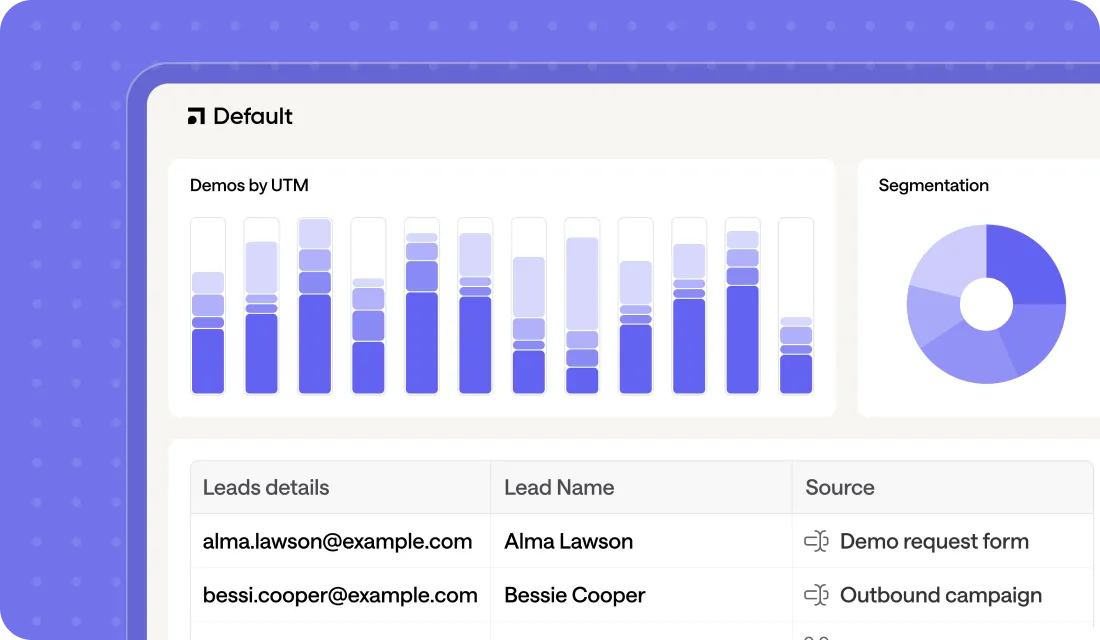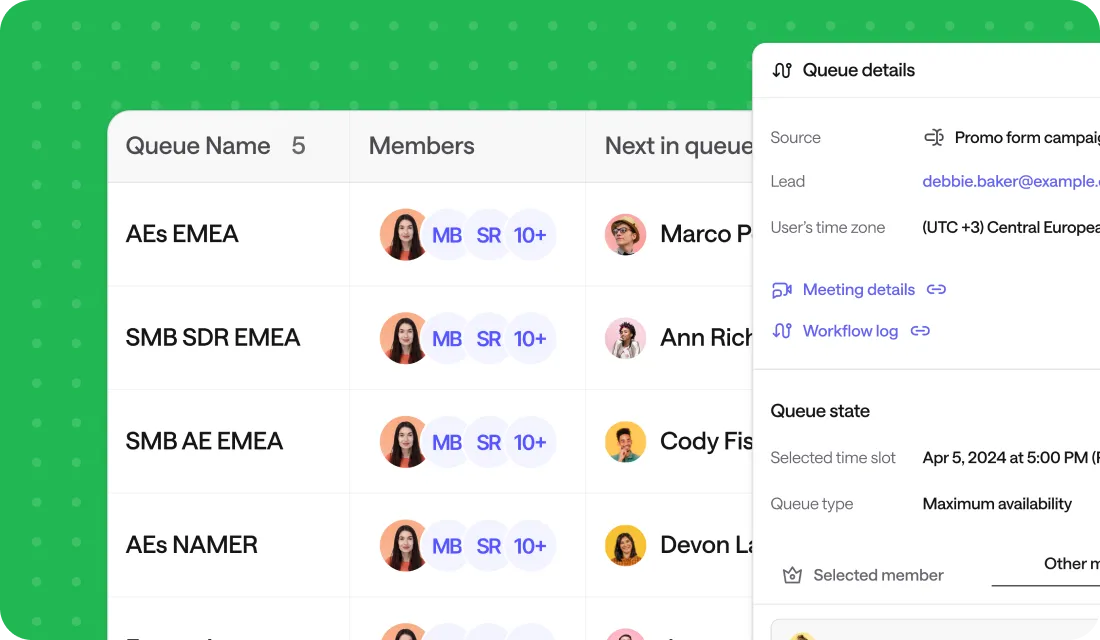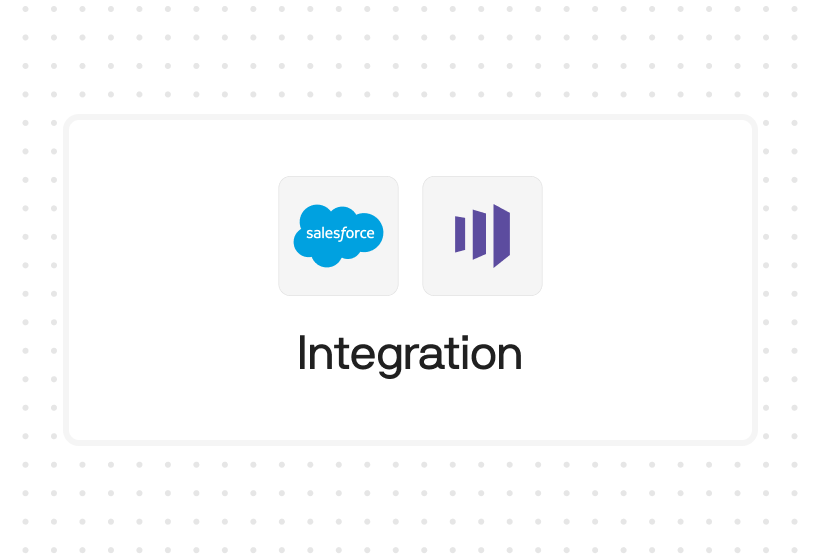Try Default

See how revenue teams automate revenue operations with Default.

Key Takeaways
Key takeaways
- CRM success isn’t about features—it’s about aligning systems, data, and teams with your GTM strategy
- A structured, phased implementation is the fastest path to rep adoption, clean data, and pipeline impact
- Missteps like siloed ownership, poor data hygiene, or over-engineered workflows quietly erode ROI
- Automation and AI turn CRMs from record-keeping tools into real-time execution engines
- Partnering with CRM experts helps you avoid costly rework and go live with a system built for growth
CRM implementation isn’t just a technical rollout—it’s a strategic reset for how your revenue teams operate. When executed properly, it becomes the engine behind faster sales cycles, better forecasting, and tighter customer retention.
At its best, a CRM unifies go-to-market teams around shared data and workflows. It eliminates handoff gaps, reduces manual busywork, and gives leadership the visibility to scale with confidence.
But without a clear implementation strategy, even the best platform can become shelfware.
In this guide, we’ll walk through the key phases of CRM implementation—what top-performing teams get right, where others go wrong, and how to set yours up to drive ROI from day one.
Key steps for effective CRM implementation
1. Define business objectives first
Before you think about vendors or features, define exactly what you want the CRM to achieve. Are you trying to shorten sales cycles? Improve rep productivity? Increase customer LTV? Without clear business goals, implementation turns into a feature dump, and usage stalls.
Tie every CRM decision to a measurable outcome. For example:
- Need better pipeline visibility? Design dashboards for deal stage velocity and forecast accuracy.
- Want to improve lead conversion? Align lifecycle stages and automate routing logic.
- Trying to reduce rep ramp time? Map onboarding workflows and surface contextual data for every deal.
Your CRM should be a revenue lever—not just a database. That starts by anchoring the rollout in real growth goals.
2. Secure stakeholder alignment
CRMs fail when they’re owned by one team but used by many. From day one, bring Sales, Marketing, Customer Success, and RevOps into the planning process—not just as stakeholders, but as co-owners.
Start by aligning on:
- Shared definitions (e.g., what qualifies as an MQL, SAL, or SQL)
- Lifecycle stages and handoffs between functions
- Reporting requirements for each team and role
- What “success” looks like post-implementation
This isn't about consensus, it’s about clarity. When teams define workflows and data needs upfront, you prevent friction, avoid rework, and drive adoption across the board.
3. Audit your current tech stack and data
Before you migrate anything, take stock of your existing systems and customer data. What tools are duplicating records? Where are key data fields missing or inconsistent? What workflows are fragmented across platforms?
Then: clean house.
- Consolidate sources of truth—decide which systems feed the CRM and which should be deprecated.
- Fix dirty data—standardize fields, remove duplicates, and archive junk.
- Map dependencies—identify what breaks if you change a field, object, or integration.
A CRM is only as good as the data inside it. Skip this step, and your team will spend more time fixing issues than closing deals. The right CRM data hygiene software can help here.
4. Choose the right CRM platform
The best CRM isn’t the one with the most features—it’s the one that fits your GTM motion. Assess your CRM options against:
- Scalability – Will it support your growth targets across new markets, products, or teams?
- Integration depth – Can it cleanly connect to your marketing, support, and data tools without constant patchwork?
- Customization vs. complexity – How easily can it adapt to your workflows without becoming a dev-heavy burden?
- User experience – If your reps hate using it, it won’t matter how powerful it is.
Your CRM should feel like an extension of how your team already works—not a system they have to fight.
5. Build a scalable data model
Your data model defines how leads, contacts, accounts, and opportunities relate—and it directly impacts forecasting, automation, and reporting.
Start with structure:
- Map core objects – Leads, contacts, accounts, opportunities, and custom objects unique to your GTM motion.
- Define relationships – How does a lead become a contact? When does an account own multiple opportunities? What links to what?
- Standardize naming conventions – Create consistent field names, picklists, and hierarchies that scale with your team.
Think of this as your CRM’s foundation. Get it wrong, and reporting breaks, automation misfires, and scale stalls. Get it right, and everything else—from routing to forecasting—runs faster and cleaner.
6. Design workflows and automations
Your CRM should mirror how your team actually works—and make that work easier to execute at scale.
Start by mapping your core GTM processes. Then translate them into CRM logic:
- Lead routing based on region, product, or ICP tier
- Task creation triggered by lifecycle stage changes
- Follow-up reminders to reduce manual nudging and improve SLAs
- Deal stage automations that prompt reps with next best actions
But don’t overdo it—automation should reduce friction, not add new layers. Prioritize workflows that save time, reduce manual errors, and support reps in moving faster, not just checking boxes.
7. Prioritize user enablement and training
Even the most powerful CRM fails without adoption. If users don’t understand how the system supports their goals, they’ll ignore it—or worse, work around it.
To drive real adoption:
- Run role-specific training that reflects how each team uses the system
- Create clear documentation for processes, definitions, and workflows
- Embed feedback loops so users can flag friction in real time
- Measure engagement with usage metrics, not just logins
Treat training as ongoing—not a one-off event. A well-trained team drives data quality, process consistency, and CRM ROI faster than any feature set ever could.
8. Phase the rollout strategically
Avoid the big-bang launch. A full-org rollout might seem efficient—but it’s risky, hard to support, and near-impossible to unwind if things break.
Instead, deploy in phases:
- Start with a pilot team—Sales, SDRs, or a regional unit that can provide real feedback
- Test key workflows and integrations before scaling
- Fix early friction points and capture quick wins to build momentum
- Use learnings to refine onboarding for the next group
Every phase should serve as a stress test and feedback loop. That way, by the time you scale company-wide, you’ve already ironed out the blockers.
9. Define metrics for success
You can’t improve what you don’t measure—and with CRM, vague goals lead to vague results.
Track metrics that prove both adoption and business impact:
- User engagement – Logins, record updates, and usage by role
- Data integrity – % of records complete, duplicate rates, field accuracy
- Business outcomes – Deal velocity, pipeline conversion, win rates, forecast accuracy
Set these benchmarks upfront. Then review them monthly or quarterly to spot where workflows need tuning—or where your CRM is quietly leaking revenue.
10. Review, Optimize, and Evolve
CRM implementation isn’t a one-and-done project—it’s an operating system that needs regular updates to stay aligned with your GTM strategy.
Build a cadence to:
- Review usage data – What features are used, skipped, or misused?
- Refine workflows – Where are reps getting stuck or reverting to manual work?
- Update processes – As your team scales or your ICP shifts, your CRM needs to reflect those changes.
- Collect feedback – What’s slowing users down? What would make them faster?
What worked for 10 reps won’t work for 100. Evolving your CRM isn’t a sign of failure—it’s how high-growth teams stay ahead.
Real-World success stories of CRM implementation
Here’s how high-growth teams are turning CRM implementation into a revenue driver—not just another software rollout.
1. Container Team: 34% lift in profit through CRM-driven sales efficiency
Container Team, a UK-based storage provider, overhauled their sales process with Pipedrive. By eliminating manual tasks and improving deal visibility, they tightened their conversion ratio from 1 in 2.7 to 1 in 2.3.
The impact? An 18% year-over-year revenue increase and a 34% boost in net profit—all tied to better pipeline management and faster rep execution.
2. Namu Travel: 271% ROI in 4 months from CRM-led process redesign
Namu Travel restructured their GTM motion around a process-driven CRM strategy. With tighter customer data, cleaner handoffs, and smarter automation, they saw a 271% return on investment—in just four months.
Productivity gains were felt across sales, marketing, and service teams, making the CRM a revenue multiplier, not just a system of record.
3. Private Research University: 507% ROI through CRM-driven engagement
A private research university implemented a CRM to streamline operations and enhance engagement with students, faculty, alumni, and donors. Over three years, the initiative delivered a 507% ROI, with full project payback achieved in just eight months. The CRM system improved personnel productivity across all channels, leading to increased revenue and efficiency.
Benefits of partnering with CRM implementation experts
DIY CRM rollouts often lead to delays, adoption failure, and misaligned processes that cost more to unwind than to build right the first time round... Here’s what seasoned implementation experts bring to the table:
1. Time-to-value gets compressed from quarters to weeks
Without a clear plan, most teams burn 3–6 months configuring basic workflows. Experts accelerate the build, validation, and rollout by applying proven playbooks. That means your reps spend less time waiting for tooling—and more time working pipeline.
2. Missteps get caught before they become liabilities
A misconfigured lifecycle stage or broken sync can quietly derail your entire funnel. Expert partners map your GTM motion into the CRM from day one—reducing risk of forecast inaccuracy, broken handoffs, or rep workarounds that corrupt data.
3. You get workflows that match how your team actually sells
Implementation partners tailor lead routing, deal stages, handoffs, and scoring models to your sales process, so reps adopt faster and managers get cleaner signals without manual overrides.
4. Adoption doesn’t become your internal headache
Poor adoption is the #1 reason CRMs fail. Pros bake change management into the rollout: role-based training, in-platform guidance, and feedback loops that adapt the system based on real user behavior—not assumptions.
5. Scale is built in, not bolted on
Most CRMs break the moment you add new products, expand territories, or double your team. Implementation experts design with future-state complexity in mind—ensuring your CRM supports scale instead of bottlenecking it.
6. You gain a strategic partner, not just a setup team
Post-launch, you’re not left with a system and no support. The right partner helps iterate workflows, optimize reporting, and evolve the CRM alongside your GTM strategy—so the system keeps pace with how your business grows.
Overcoming common CRM implementation challenges
Even well-funded CRM rollouts hit roadblocks. Here’s where things go sideways—and how to get ahead of them.
Misalignment across teams stalls adoption
When Sales, Marketing, and CS define “qualified,” “handoff,” or “ownership” differently, the CRM becomes a battleground—not a shared system. Solve this early with a GTM blueprint that defines lifecycle stages, SLAs, and ownership at every stage of the funnel.
Dirty data kills trust and slows down reps
Outdated, duplicate, or misclassified data forces reps to second-guess what’s in front of them—and leaders to question every report. Run a full pre-migration cleanse, standardize field logic, and bake in automated validation to keep data clean long-term.
“Data is the fuel that powers your CRM. If your data is messy, outdated, or incomplete, your CRM’s effectiveness is drastically reduced.” — Convrg Agency
Over-engineering tanks usability
Cramming in too many custom fields, rules, or automations creates drag. Reps waste time navigating complexity, while admins struggle to maintain it. Start with the critical 20% of functionality that drives 80% of value—then scale gradually.
Low engagement signals deeper issues
If reps aren’t using the CRM, it’s not a training problem—it’s a design problem. Fix this with real-world role testing, in-context guidance, and feedback loops that adapt sales workflows based on how the team actually works.
“Know your end users. Commit to simplicity. Deliver value and be meaningful. Train, learn and repeat.” — Michael Williams, CRM Director at Vitality
Lack of iteration makes the system obsolete fast
GTM strategies shift. Headcount changes. Territories expand. If your CRM doesn’t evolve with those changes, it turns into shelfware. Build in a quarterly review cycle to assess what’s working, what’s lagging, and what needs to evolve.
The good news? These pitfalls are predictable—and entirely avoidable with the right approach.
✅ CRM rollout health check – what to solve early
- ☐ GTM definitions aligned across Sales, Marketing, and CS
- ☐ Dirty or duplicate data cleaned pre-migration
- ☐ MVP workflows prioritized before scaling automation
- ☐ Role-based testing completed before go-live
- ☐ Quarterly review cadence established for continuous improvement
Best practices for maintaining CRM efficiency
Getting your CRM live is just the start. To keep it delivering value quarter after quarter, you need tight operational discipline. Here’s how high-performing teams keep their CRM running as a true revenue engine—not just a record-keeping tool.
1. Treat data hygiene as a recurring revenue safeguard
Bad data breaks trust. Build automated rules to enforce field formatting, validate inputs, and surface duplicates. Run quarterly audits to catch gaps early. Clean data = trusted reporting = faster decisions.
2. Make quarterly reviews non-negotiable
CRMs become outdated when no one’s looking. Every 90 days, review usage trends, identify abandoned workflows, and align system structure with current GTM strategy. What’s ignored this quarter becomes friction next quarter.
3. Update roles and permissions as you scale
As your team grows, misaligned access creates confusion, errors, or worse—data exposure. Revisit permission sets regularly to reflect new functions, territories, or product lines. Clarity drives accountability.
4. Monitor automations like product features
Track their performance, audit dependencies, and build alerts for when they fail or go unused. Broken automations quietly derail processes and slow down reps.
5. Align every CRM update with a GTM initiative
Only adjust workflows when they map to clear shifts—new ICPs, campaign strategy, product updates, or handoff changes. Your CRM should always mirror your go-to-market motion.
6. Build a real feedback loop with users
Your reps know where the friction is—if you’re listening. Use Slack channels, quick forms, or monthly office hours to gather feedback, then act on it visibly. That’s how you turn users into advocates.
Enhancing CRM with automation and AI
Modern CRMs aren’t just systems of record—they’re execution layers that drive GTM performance when powered by automation and AI.
Automation takes care of repetitive, high-volume tasks that slow teams down: lead routing, meeting scheduling, follow-up reminders. It maintains consistency in processes, reduces manual errors, and allows representatives to focus more on high-value activities.
AI adds intelligence on top of those workflows—surfacing insights, predicting risk, and accelerating decisions where it matters most. For example:
- AI-driven lead scoring helps reps focus on the most convertible accounts—shortening sales cycles and improving win rates.
- Predictive analytics identify pipeline gaps before they hit forecasts, allowing leaders to course-correct in real time.
- Intent signals and enrichment tools detect buying behavior early and automatically update records—so your team moves before competitors even know there’s a deal.
According to McKinsey, companies that embed AI into their sales processes have reported:
- Over 50% more leads and appointments
- 40–60% reductions in customer acquisition costs
- 60–70% shorter call times
When implemented right, AI and automation turn your CRM into a revenue multiplier—not just a digital filing cabinet.
Boost your business with Default CRM implementation
A CRM doesn’t create results; execution does. The teams that win with CRM don’t just buy a tool—they design a system that reflects how they go to market, scale operations, and close deals.
That’s what Default helps you build.
From data model to rollout to user adoption, we work with high-growth teams to launch CRMs that actually drive revenue. Fast. Clean. Future-proof.
If you're ready to make your CRM the engine behind your GTM strategy—not a drag on it—let’s talk.
Looking to improve CRM data quality right now? We’ve created platform-specific templates to help you get started:
• CRM data management template for HubSpot
• CRM data management checklist for Salesforce users
Conclusion

Former pro Olympic athlete turned growth marketer! Previously worked at Chili Piper and co-founded my own company before joining Default two years ago.
Accelerate your growth with Default.
Revamp inbound with easier routing, actionable intent, and faster scheduling












.png)



























